Where's the mail? Where's the aid? Recovery in Florida islands grinds on, months after Hurricane Ian
Sanibel and Captiva have long been dependable economic engines for Lee County, Florida.
Then Hurricane Ian slammed on the brakes.
It severed the barrier islands’ mainland connection, shredding them with 155 mph winds that shoved 12 feet of storm surge over cottages, condos and businesses.
Even for hurricane-seasoned island families, the storm’s savagery was a surprise. “We’ve always been the symbol of hope, normalcy and ‘Things are going to be OK,’ said Sanibel City Councilman and Vice Mayor Richard Johnson, whose family has owned Bailey’s General Store since 1899. “We were prepared to support the community right after the wind died down,” he said. “That’s the Bailey family tradition. But this one kicked us right square in the gut.”
Now, as the initial high-spirited push to get back in gear passes the three-month milestone, strain is starting to show, though optimism persists.
Lee Health’s island offices are once again seeing patients. Students are expected to return to the Sanibel School later this month. Bailey’s announced plans to rebuild. Waterfront dining is back on both islands ‒ Captiva’s ‘Tween Waters and Sanibel’s Gramma Dot’s – and tourism-focused businesses are reopening.
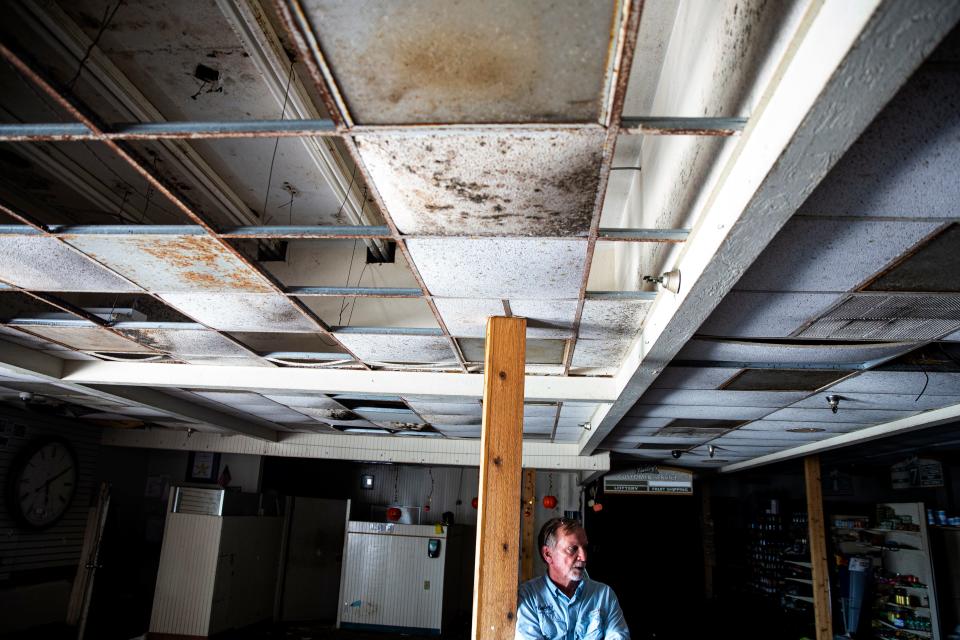
Shrimp and Grit: Fighting to save the Fort Myers Beach shrimping fleet after Ian's devastation
Ian's deadly path:Ian's deadly path: A visual look at how the hurricane devastated Florida region by region
As Mike Zanolli drilled rigging for power strips under the YOLO Watersports counter on a recent Captiva morning, the bright waiting room still smelled of new flooring and fresh paint, courtesy of Ian. With no customers, things were a bit quiet, but Zanolli wasn’t complaining. “We didn’t think we’d have a bridge for a year,” he said. “No, it’s not busy yet, but at least it’s happening.”
Repairs to the islands’ three-mile-long causeway were faster than most expected; it opened to helpers in early October, to residents Oct. 21 and to the public the first week of January.
Yet that most recent opening was contentious.
Many business owners were happy to see potential customers, but many residents didn’t relish the potential congestion and staring strangers, though what some feared would be a flood hasn’t materialized, said Sanibel Police Chief William Dalton.
“During regular season, we get anywhere from 10,000 to 13,000 cars a day to cross the causeway and yesterday (Wednesday), it just hit 4,000, so there’s just not a lot of folks coming out here right now.”
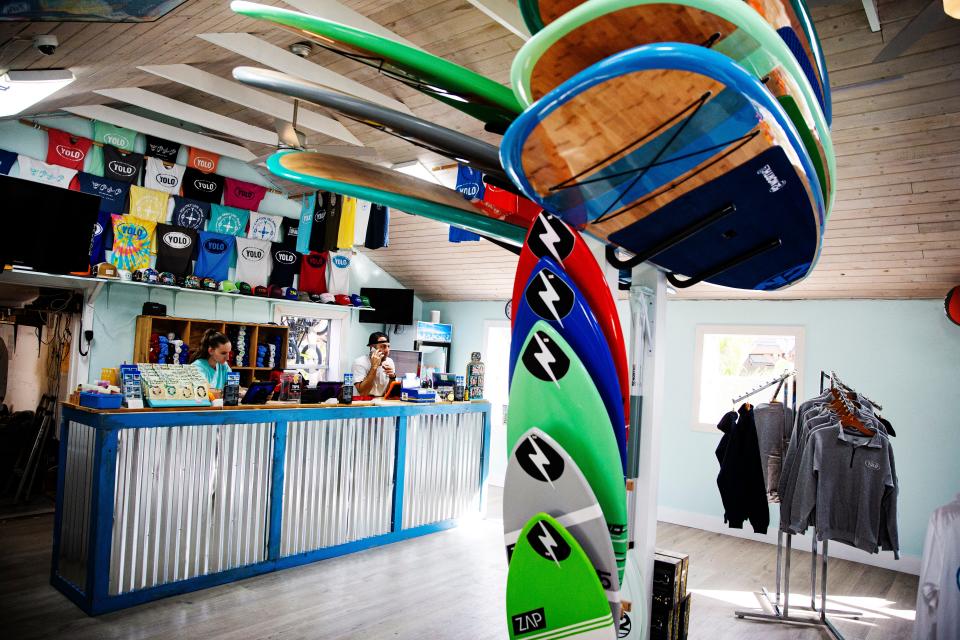
Plus, with the islands still raw, many residents didn’t feel ready to welcome mainlanders, many with little to do on the island but gape.
Few hotels, shops or restaurants are open, nor are the famed J.N. “Ding” Darling National Wildlife Refuge, Sanibel’s shell museum, or the island’s historic village. And the shoreline is firmly closed to nonresidents, says Chief Dalton.
“That’s why (the opening) is premature, in my opinion,” says resident Susan Paolantonio. “With the beaches closed, I don’t know why anybody would be there.” Plus, she says, extra vehicles clog roads already crowded with debris and repair workers, especially when they slow to a crawl so passengers can snap disaster porn.
“The traffic this week was just awful – people driving around slow, taking pictures of piles of garbage,” Paolantonio said. “Those cars really don’t have to be there … I’m not being a snob and I don’t want to close off our island, but we just needed a little more time.”
It’s not that Paolantonio doesn’t understand the need for an economic jump-start – “I used to own a business in Sarasota so I get it – revenue means something” – but it burdens already overloaded residents, she says, especially since residents must travel to south Lee County if they want their mail.
An hour-plus off-island commute for mail
That’s another island hot button issue: After the Sanibel Post Office was damaged in the storm, the U.S. Postal Service shunted all Sanibel mail to a south Fort Myers location, even though Captiva residents get theirs on-island. Islanders have mounted a so-far ineffective email campaign to Postmaster General Louis DeJoy.
As for when delivery – or even an on-island office – will be available again, USPS spokesman David Walton wrote in an email, “Service is being restored as quickly as possible in areas impacted by Hurricane Ian.”
To a follow-up asking for specifics, he wrote, “Unfortunately, that’s all of the information I have at this time,” though signs posted at the temporary Jetport Loop location estimate late summer. Walton also didn’t immediately provide an estimate of damages to the building.
But if the government could fix the causeway in a few weeks, if FedEx, Amazon and UPS can deliver, how hard would it be to rig up a temporary post office, islanders wonder. On neighboring Pine Island, residents can pick up their mail at an outside table under a tent, though Fort Myers Beach residents also must travel to Jetport Loop.
For those running businesses, the imposition of a 60-plus minute commute is galling, says Cathy Gibson Lanier, who got only a form-letter response from DeJoy. “We don't have that kind of time in our day, and now we have to pay tolls to do it as well,” she said. “Our local government folks at the state level have done nothing to help, and we're drowning. They could probably serve our needs using the same truck or trucks that go out to the Captiva P.O. every day, but won't.”
Unlike Paolantonio, Lanier says the causeway opening was overdue. “Now, maybe we can get on with things and get the island functional again … Drive around somewhere other than our wonderful island and you'll see we are woefully behind literally every other neighboring community.”
Most of Sanibel’s revenue comes from tourism, she says, and without open condos, resorts, restaurants and beaches, the island will remain behind for years. “Tourists are creatures of habit. They're going to travel, and if Sanibel's not ready for them, perhaps Fort Myers Beach or Bonita might be. And once they stay there instead, there's a high probability of their returning there instead of here for subsequent vacations.”
Where's the promised aid?
John Lai is less worried about tourists’ memory than he is about available lodging, which is lagging in the absence of promised Small Business Administration loans.
The message trumpeted to businesses following the storm: Apply to the federal agency for aid. In Southwest Florida, hundreds did. Yet three months later, the money isn’t flowing, says Lai, CEO of the Sanibel & Captiva Islands Chamber of Commerce.
“We’ve not heard of one member on-island ‒ and we’ve asked ‒ that has received an SBA loan yet,” said Lai.
And it’s not just Sanibel and Captiva, says Lai, who’s also regional director of the Florida Restaurant and Lodging Association. On a call Wednesday with the regional chamber alliance, “Fort Myers, Cape Coral and Fort Myers Beach all reported exactly the same thing: None of their members has received a penny from SBA … It is a very large issue.”
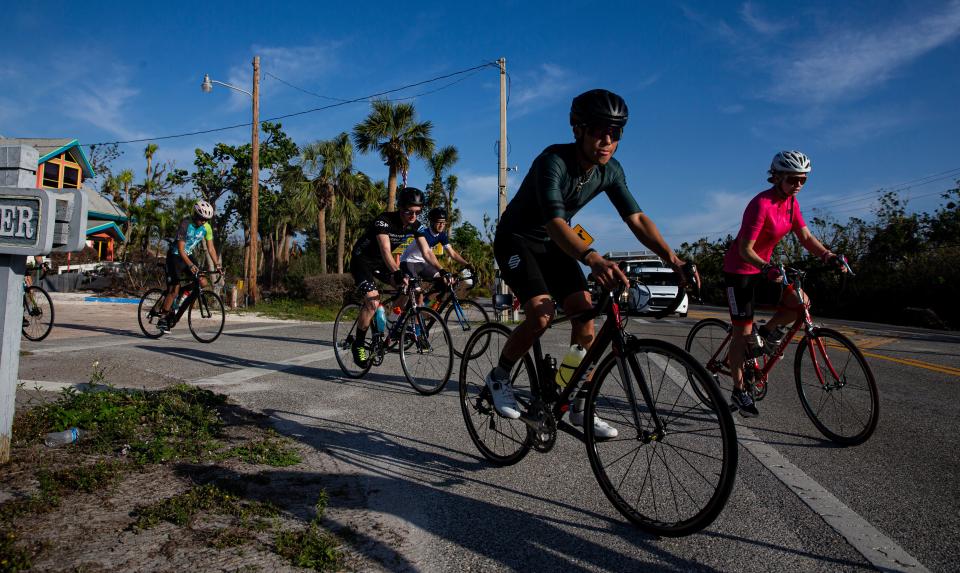
At this rate, Lai says, the islands will only be at a quarter of their capacity next year.
“By 2024, our projections are that we’ll have approximately between 20 and 25% of our hotel room inventory back on Sanibel – that’s concerning, obviously, being largely a tourism-driven economy, but that number is based purely on the speed at which FEMA and insurance are moving at currently. So it’s not unreasonable and it’s not something we hope is true, but based on what we’re seeing right now, with the speed at which we can get contractors and goods, after we get a decision from FEMA and insurance, we’re looking at 24 months (so) my concern is we’ll be forgotten from an advocacy perspective because federal and state dollars are still very much in need to help our businesses survive and help our residents rebuild.”
And an open causeway is key to that, he says.
Return to Sanibel Island after Ian:Smashed homes, slick ooze, and wondering how to rebuild
Sanibel reality check:Displaced businesses, orphaned trombones and debris fields
“We absolutely needed the contractors, the adjusters and the appraisers here to move this ball forward – to take the next step.” Plus, with the chamber advocating for a large hurricane relief package for both residents and businesses, “the chances of us getting the funding decrease significantly if we did not open the bridge,” Lai said. “And thirdly, it is impossible for us to ask our business community – which is a big part of our community – to reopen if we’re only going to try to serve the less than 1,000 fulltime residents currently on the island.”
Most importantly, he says: “We have a governor who pushed very hard to reopen this bridge and it was done with taxpayer dollars,” he said. “This is not a political statement – it just is that we could not openly accept the (money) and be appreciative of it if we were going to not let the taxpayers come over the bridge."
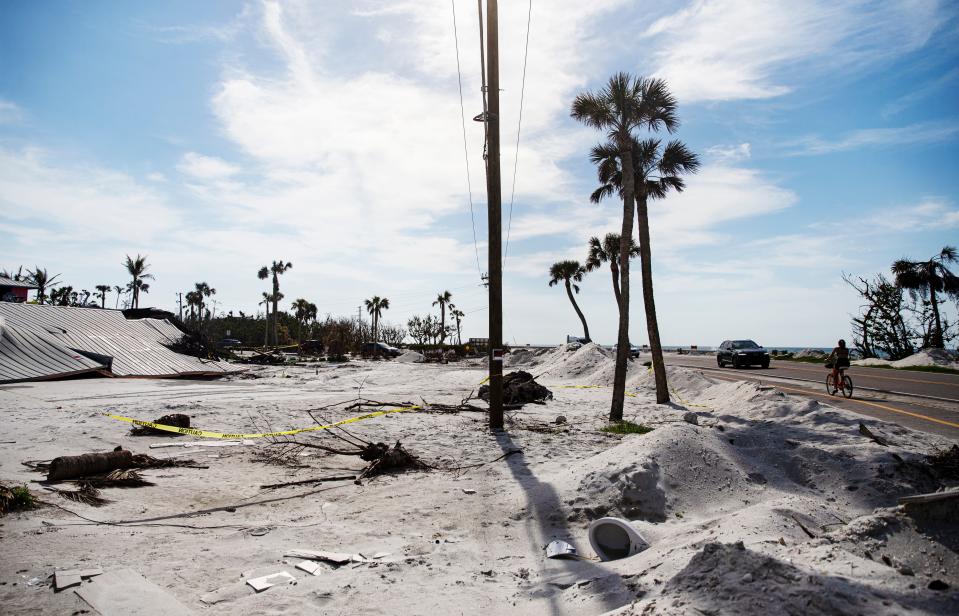
Meanwhile, Lai is confident Sanibel won’t be forgotten.
“Our water is beautiful, and tourism is dying to get back. The demand will be there when we reopen and I think the natural beauty of Southwest Florida will continue to rebound,” he said. ”That drive over the causeway, as different as it is, is still very relaxing and therapeutic, and the island has a lot to offer, even in its current state, but it’s not what you remember from last year.”
Visitors won’t be returning to the same island – at least not right away, he says.
“The islands are open. We want to see them. But we want them to understand the experience before they come (so) they don’t come out expecting to rent a bike at Billy’s and bike down Periwinkle. They can certainly come out with a bike but Billy’s isn’t open. I want them to come out and enjoy the food, maybe drive out to Captiva and stay a night if they can get a room, but also want them to understand we are running a marathon and we’re nowhere near the first half of it being over. And while we want you to come and enjoy watching the marathon, understand we’re in the first leg of this race. We’ll finish it, but we’re not there yet.”
'By far the most difficult struggle'
Ask Dalton how his last three months have gone and he chuckles. “If I speak honestly, you’re not going to be able to use the words.”
In nearly 29 years on the force, “this has been by far the most difficult struggle … this has significantly affected every structure on the island from the lighthouse to Blind Pass.”
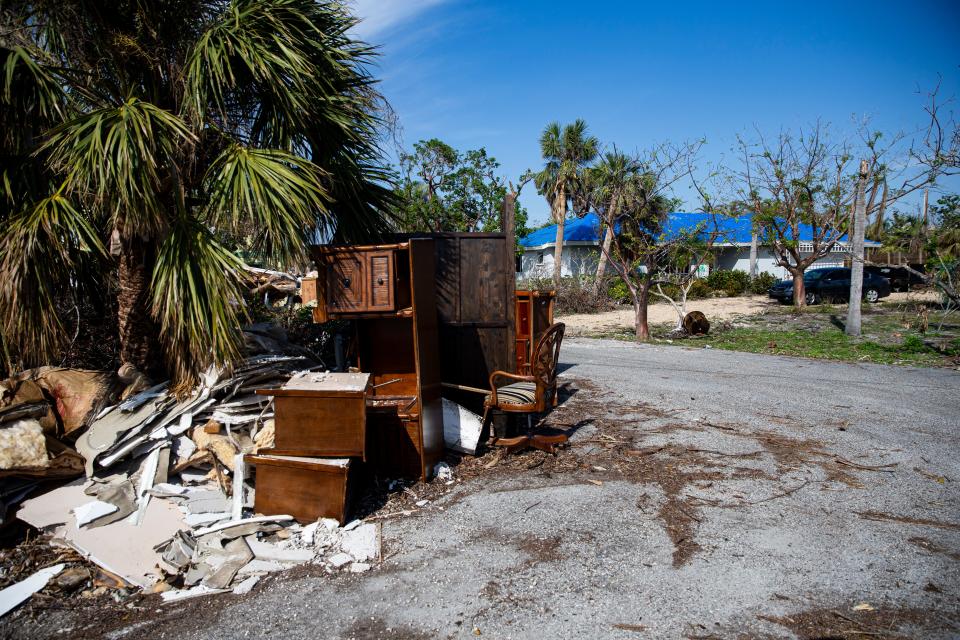
To protect those 9,000-odd structures since the storm, he has 23 officers, as well as rotating out-of-town support, which can more than double their number, but challenges remain.
“We’ve had problems,” he said. “There’s been about 60 burglaries since the time of the storm. Compare that with the prior five-year average which was about 16 a year.”
Even so, not what he’d call looting. “To me, looting is like a large number of people when they bum-rush a store or something like that, and ransack it. What we had here, in layman’s terms, were thefts and burglaries.”
No organized thugs swarming houses, he says, “but what we did have were people out here on a legitimate reason – usually some sort of remediation – and they just couldn’t help themselves and stole. And we did have some instances where houses were broken into using force, but it wasn’t like a roving gang of looters.”
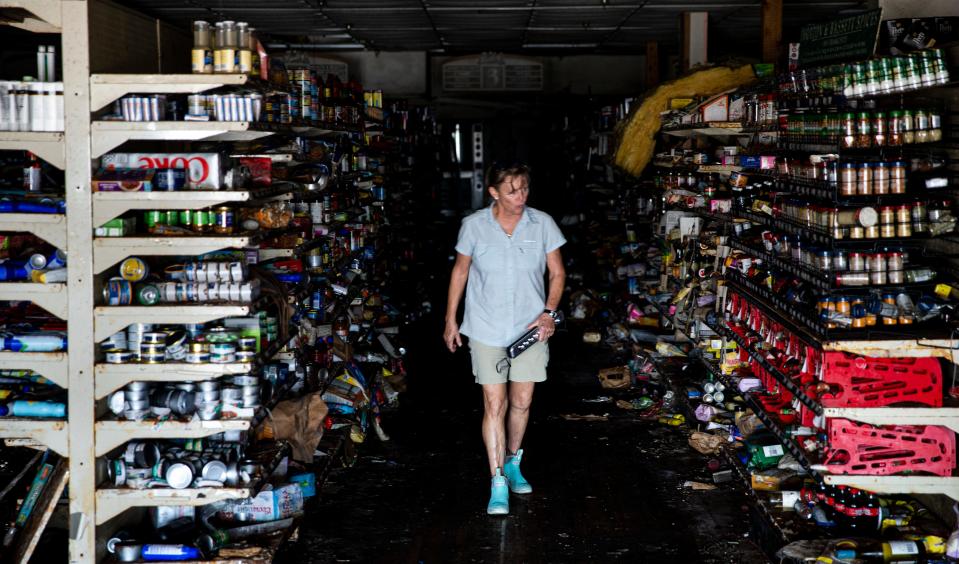
Even much-loved Baileys got hit. Thieves stripped the store of scratch-off lottery tickets, Dom Perignon and high-end fishing knives, Johnson said. “It made us sad because it was a violation and a lack of respect.”
What made it a particularly bitter pill is that in years past, the store handed provisions to anyone who needed them, says Johnson’s wife Mary Mead Johnson.
“It was always, ‘If you need something, then by all means, come on in and we’ll work it out,” she said. “Don’t worry about paying me today, make a list and get it when you can.”
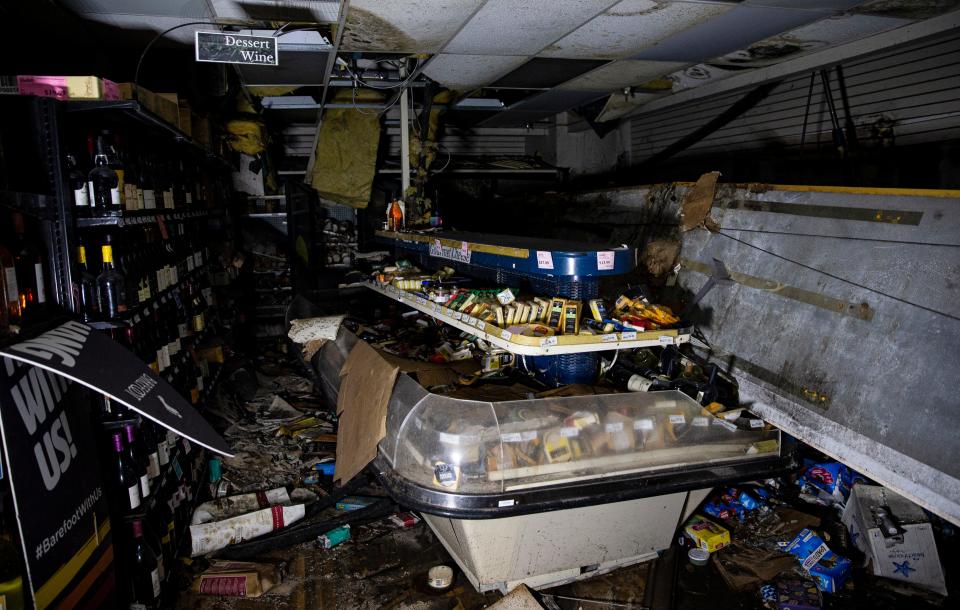
Dalton expects the return of residents and electricity will help. Between curfew hours of 9 a.m. to 6 p.m., there’s still a checkpoint and at least 40% the homes have power again, Dalton estimates. “There are a lot more people in residence here,” he says, “And that’s what’s going to help us – when our citizens are back, they’ve got power, they’ve got their alarms and they can pick up their phones.”
The causeway reopening has brought another kind of visitor to the island: those looking to extract useful items from the discard piles.
Contrary to social media rumors, it’s not illegal on Sanibel, provided the pile’s not on private property, Dalton says. Still, some residents may find it distressing. “If somebody calls us, we’ll go,” he says, “And we have to try to handle it in a diplomatic way. We tell (the salvagers) that it’s legal, but they’re upsetting people.”
Think about it, he says: “Somebody has just pushed their whole life out to the curb and they don’t want somebody picking through it. They didn’t want to push it out there in the first place and they want it to just be taken to the dump and go away.
“They don’t want somebody rooting though all their personal items. And I have to say, I’d probably feel the same way.”
Debris can stress neighbors’ relations as well.
On Captiva, Gregg Fergus is trying to stay positive, but it’s an effort.
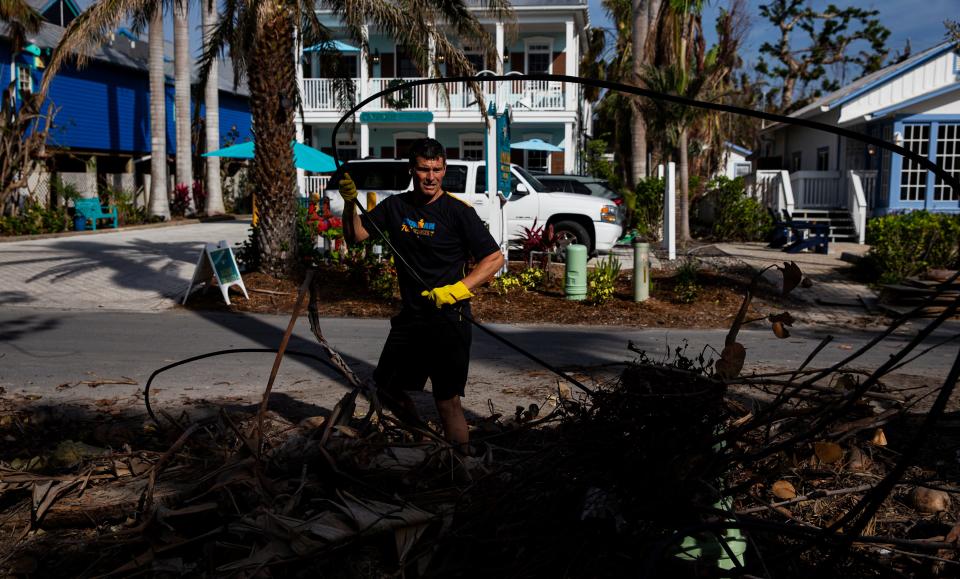
For weeks, neighboring businesses have been piling their storm-battered stuff in front of the rentals Fergus oversees, jamming limbs, trunks and crumpled barriers into the front-facing right-of-way, messing up the buildings’ cable and irrigation, he says.
Not only that, but someone tossed reinforced landscape timbers in the dead plant pile, so it couldn’t be picked up by the horticultural debris hauling truck, which just pulled out, to Fergus’ great dismay. There’s nothing he can do, he says: the public area is fair game.
“Even though none of this stuff is ours, they can put it in the right of way wherever they want,” he says. “But it’s up against our cable and our sprinkler system and everything, so they all broke.”
His strategy: Let it be.
“If I’m actually not mad in the end, that’s the only saving grace. Somebody has to be the bigger person. What are you going to do - fight them?"
He shrugs toward a pile of palm fronds. "Kill 'em with kindness.”
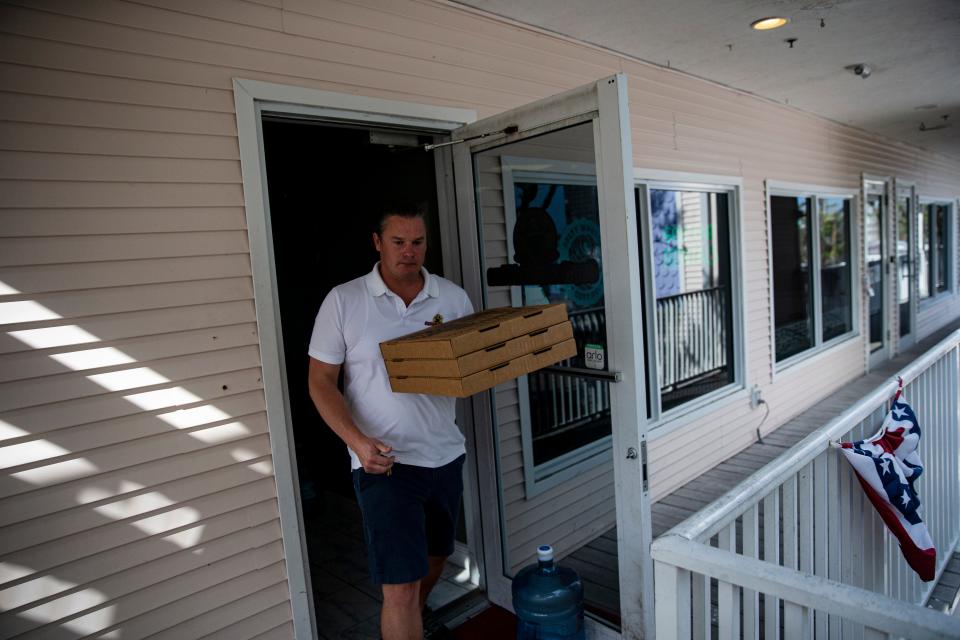
This article originally appeared on USA TODAY: Sanibel and Captiva Island recovery from Hurricane Ian grinds on

